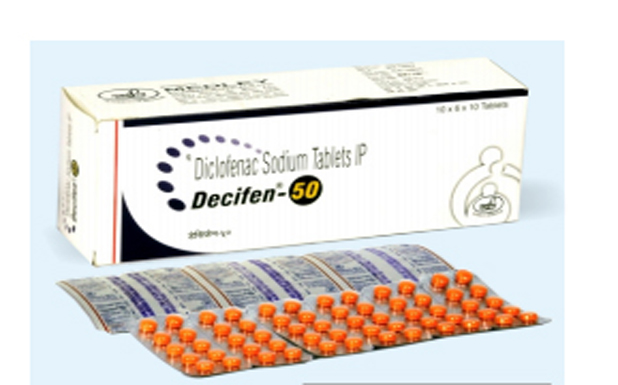Tablet is a Non-steroidal anti-inflammatory NSAID drug used to treat pain associated with conditions like Gout, Migraine, Rheumatoid Arthritis, sprains of muscles and joints and in mild to moderate fever sometimes.
Indications:
Indicated for
●For relief of the signs and symptoms of osteoarthritis, rheumatoid arthritis
●For acute or long-term use in the relief of signs and symptoms of ankylosing spondylitis
Mechanism of action:
Diclofenac Sodium 50mg Tablet is a non-steroidal anti-inflammatory drugs . It works by blocking the release of certain chemical messengers that cause pain and inflammation ,redness and swelling.
The primary mechanism responsible for its anti-inflammatory, antipyretic, and analgesic action is thought to be inhibition of prostaglandin synthesis by inhibition of the transiently expressed prostaglandin-endoperoxide synthase-2. It also appears to exhibit bacteriostatic activity by inhibiting bacterial DNA synthesis.
Inhibition of prostaglandin synthesis occurs systemically resulting in undesirable symptoms such as irritation of the gastric epitheliumThe action of one single dose is much longer 6 to 8 hr than the very short 1.2–2 hr half-life of the drug would indicate. This could be partly because it persists for over 11 hours in synovial fluids.
Pharmacokinetics:
Absorption: Diclofenac is 100% absorbed after oral administration as compared to IV administration . Due to first-pass metabolism, only about 50% of absorbed dose is systemically available . Food has no effect on the extent of diclofenac absorption. There is usually a delay in the onset of absorption of 1 to 4.5 hours and reductionis seen in peak plasma levels of <20%
Distribution: The apparent volume of distribution of diclofenac sodium is 1.4 L/kg. Diclofenac is more than 99% bound to human serum proteins, primarily to albumin. Diclofenac diffuses into and out of the synovial fluid. Diffusion into the joint occurs when plasma levels are higher than those in the synovial fluid, and then the process reverses and synovial fluid levels are higher than plasma levels.
Metabolism : Diclofenac metabolites have been identified in human plasma and urine. The metabolites include 4'-hydroxy-, 5-hydroxy-, 3'-hydroxy-, 4',5-dihydroxy- and 3' hydroxy-4'-methoxy diclofenac. In patients with renal dysfunction, peak concentrations of metabolites 4'-hydroxy- and 5-hydroxy-diclofenac were approximately 50% and 4% of the parent compound after single oral dosing .
Excretion : Diclofenac is eliminated through metabolism and urinary and biliary excretion of the glucuronide and the sulfate conjugates of the metabolites. Little unchanged diclofenac is excreted in the urine. 65% of the dose is excreted in the urine and approximately 35% in the bile .
Contraindications:
● Hypersensitivity against diclofenac
● Third-trimester pregnancy
● Active stomach and/or duodenal ulceration or gastrointestinal bleeding
● Severe congestive heart failure
● Severe liver insufficiency
● Severe chronic kidney disease
● Caution in patients with fluid retention or heart failure
● Can cause serious skin adverse events such as exfoliative dermatitis
Side Effects:
● Vomiting
● Stomach pain / epigastric pain
● Nausea
● Indigestion
● Diarrhea
● Heartburn
● GI Bleeding, Ulceration and Perforation
● Hepatotoxicity
● Hypertension
● Heart Failure and Edema
● Renal Toxicity
● Serious Skin Reactions
